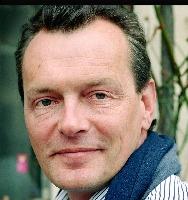Joost van der Nat is a researcher for the Dutch Digital Heritage Network. In 2016 he and his team won the DPC Digital Preservation Award for Research and Innovation.
A short, personal story of how Digital Preservation came into my life, and the way our household deals with it now. Some astounding figures on how the world is expanding its digital universe lead to a burning question…
n=1, or how digital non-preservation showed its ugly face to me
When I try to explain to Muggles (the major part of the population that is ignorant of the blessings of, and the need for Digital Preservation) what Digital Preservation is all about, I often give the example of the scenario that took place in 2004. A trip to New York with our then 11 year old son. I made a lot of video recordings, and spent 60+ hours in producing a home video of 30 minutes on a DVD. Menus and Gershwin’s music topped it off, a great success with family and friends. Then 3 years later the DVD wouldn’t play. Bit rot or low quality DVD? But no problem, of course I had a backup on a separate hard disk. And as you may guess, the hard disk didn’t function… A company called The Disk Doctor saved me, for the round sum of € 750. Lesson learned: store your stuff in the cloud (too).
n=2, or how our household deals with its (digital) objects
Over the years E (my better half) and I have collected significant amounts of recorded music. Vinyl to start with, and countless CDs as of the 1990-ies. Digitising LPs is fun, but time consuming. Fortunately the vinyl collection was not too big. Ripping 600+ CDs and finding and applying cover photos in the course of 15 years is achievable. The music, along with other stuff, is stored on a Synology NAS that is backed up to Amazon Glacier in Ireland for $ 2.34 per month (600 Gb). The point is however that nowadays Spotify has (almost) all of our music at a fingertip.
The same goes for DVDs. In the course of many years the collection of movies grew up to 150+ (modest, compared to some friends). At present Netflix is streaming a lot of this content straight into our home.
Old family photo albums are great. Altogether we have some 15, containing priceless pictures dating back to the early 1900’s. On the pictures one can look back in time, seeing familiar faces in their young versions, and historic views of modernized places. Digitising these albums is fun, Photoshop slowly reveals its secrets and the result is spectacular. The extended families love it. Minor details is the meta data. The date a picture was taken is often not available, and some of these faces must be family, but who is it again ? Too late to ask…
And then, as of the early 2000’s, the digital camera came into our lives. The number of pictures was not longer limited to the 24 or 36 one would have on an analogue camera. An influx of 100’s of pictures per year in the household was manageable. However, soon the camera became part of the smartphone (or is it the other way round ?), and things got worse. E. travels a lot, and loves to share places, moments, people, diners, outings, seminars, nature, odd pictures, and what not. The potential ingest of pictures of her phone is now well over 2.000 per year. As many of these pictures are instantaneously shared with WhatsApp (in various groups) the number of files is likely to be around 4.000. duplicates included. The family curator is in trouble…
Recently I heard of Gudak. This is an app for the smartphone that will let you make 24 pictures, no reviewing. You then wait 3 days before you can check the results. I am going to try to replace the camera function of E’s phone with this app.
All in all our household seems to have reached the maturity level of “backed up bit preservation”. Which is something…
n = zetta, or how the world develops its digital universe
Now only imagine what the above n=2 story turns into when you realise that the number of active mobile social users in the world in 2017 has come to well over 2.5 billion (a third of the world population, see We are Social and Hootsuite). In 2015 Bernard Marr gave some staggering figures in Forbes:
- Facebook users send on average 31.25 million messages and view 2.77 million videos every minute.
- We are seeing a massive growth in video and photo data, where every minute up to 300 hours of video are uploaded to YouTube alone.
- In 2015, a staggering 1 trillion photos will be taken and billions of them will be shared online. By 2017, nearly 80% of photos will be taken on smart phones.
- The data volumes are exploding, more data has been created in 2013 -2014 than in the entire previous history of the human race.
- Data is growing faster than ever before and by the year 2020, about 1.7 megabytes of new information will be created every second for every human being on the planet.
IDC forecasted in 2017 that by 2025 the global data sphere will grow to 163 zettabytes (a zettabyte is a trillion gigabytes [JvdN: A trillion seconds is 31,710 years, to give you an idea.]). That’s ten times the 16.1 Zb of data generated in 2016.
Now my conclusive question is: either the Digital Preservation Community comes up with some ideas on how to tackle this, or should we say “Digital Preservation, don’t try this at home !”?
I do not have the answer (yet ;-). Maybe the industry has, in the longer run?
